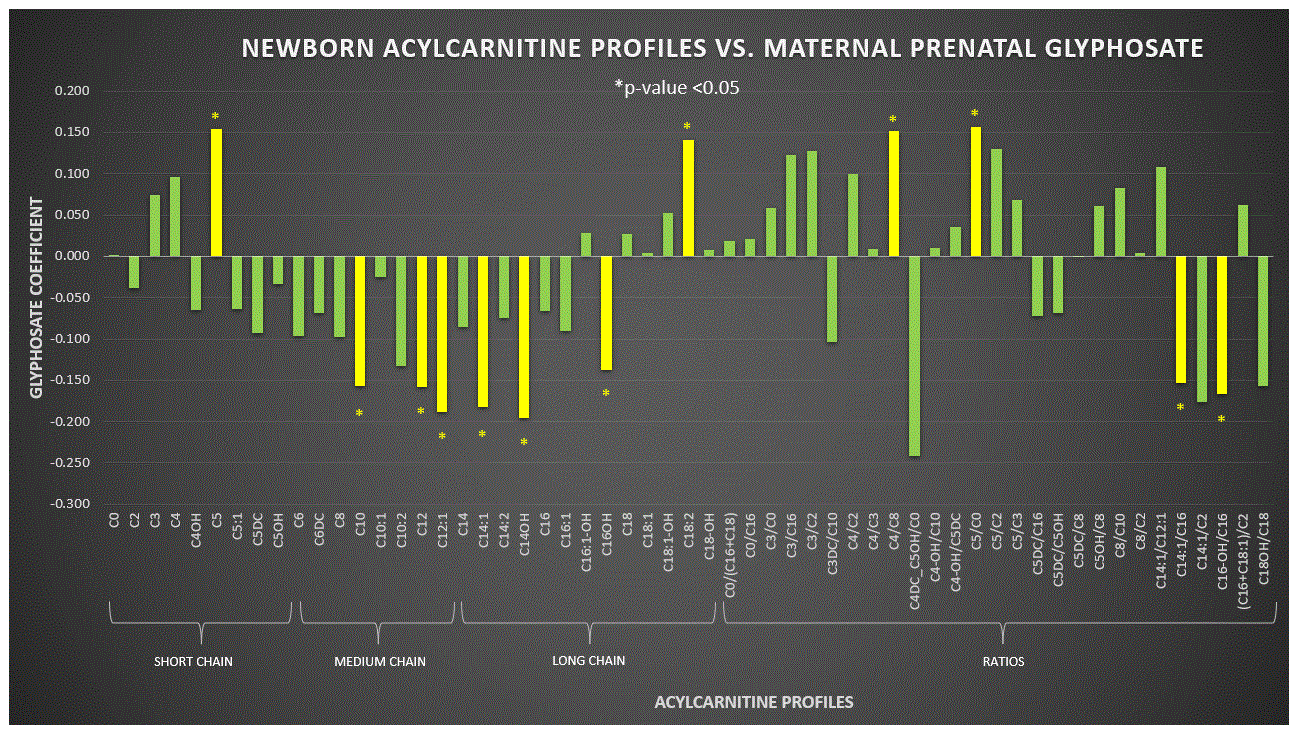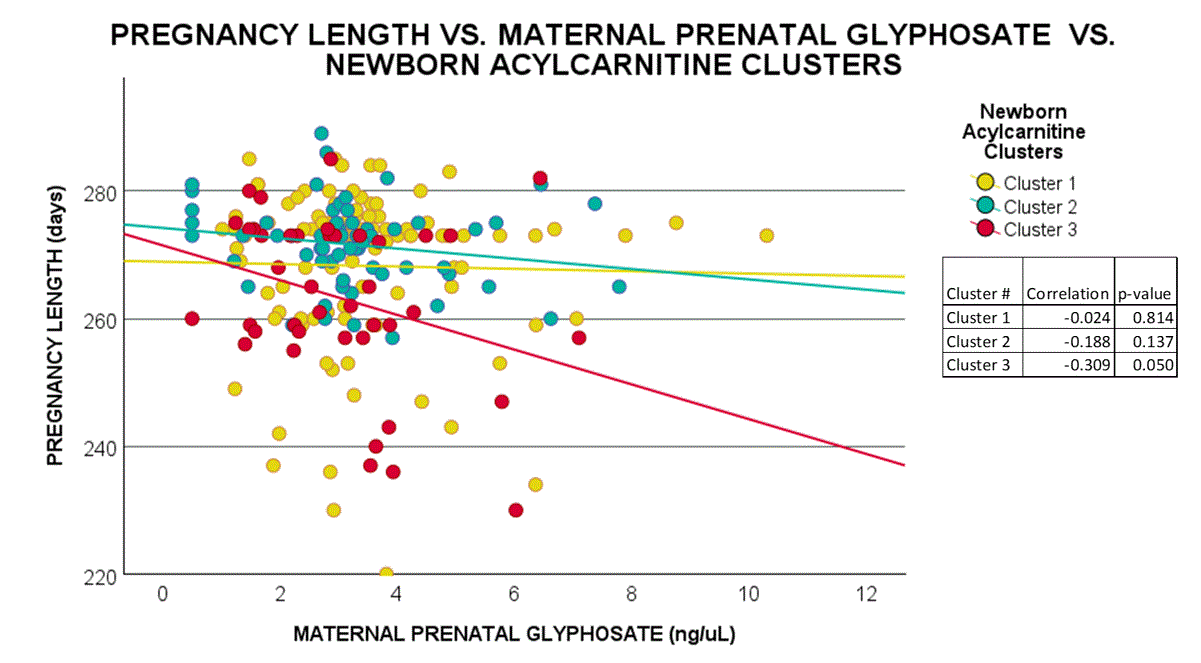Environmental Health
Session: Environmental Health
243 - Impact of maternal prenatal glyphosate exposure on neonatal acylcarnitines
Saturday, May 4, 2024
3:30 PM - 6:00 PM ET
Poster Number: 243
Publication Number: 243.1549
Publication Number: 243.1549

Paul D. Winchester, MD, MA (he/him/his)
Clinical Professor of Neonatology
Indiana University School of Medicine
Bargersville, Indiana, United States
Presenting Author(s)
Background: Our lab discovered that 93-99% Hoosier pregnant women were exposed to glyphosate (GLY) in pregnancy. Further studies demonstrated that in animals, GLY induces epigenetic changes leading to transgenerational inheritance of obesity. Other labs have found that perinatal GLY causes non-alcoholic fatty liver disease both in rodents and humans. (NAFLD). Human studies have found that higher GLY levels are associated with shorter pregnancies (and preterm birth) as well as smaller-for-dates offspring. We reported last PAS year that American pre-pregnancy BMI has been steadily increasing and with it increasing hypertensive diseases and diabetic diseases of pregnancy (HTNDP, DMDP). We also first reported that elevated free carnitine levels in newborns were associated with most adverse neonatal outcomes. Others have linked acylcarnitine profiles (AC) with pregnancy complications of HTNDP and DMDP as well as with NAFLD. To date, no one has reported acylcarnitine profiles correlated with prenatal GLY exposure.
Objective: Does prenatal GLY result in alterations in the acylcarnitine (AC) metabolome? Do acylcarnitine profiles correlate with length of pregnancy?
Design/Methods: Two previously studied maternal cohorts were combined in whom GLY levels were measured and whose singleton infants had AC measures within the first four days of life. Maternal and neonatal variables were collected and GLY levels were correlated with 57 AC species (C0 to C18) as well as ratios used in Newborn Screening tests (NBST). Correlation coefficients and multivariate analysis was used to isolate correlations between prenatal GLY and AC. Two-step Cluster analysis was performed to identify AC clusters linked to pregnancy length.
Results: Prenatal GLY was found to be significantly correlated with increases in C5, C18:2, C4/C8, C5/C0, GLY was negatively correlated with C10, C12, C12:1, C14:1, C14 OH, C16OH, C14:1/C16, C16-OH/C16. (Figure 1). AC carnitine cluster (3) was significantly negatively correlated with pregnancy length.(Figure 2)
Conclusion(s): Prenatal GLY exposure is correlated with altered AC profiles in newborns. Since ACs are vital links to fatty acid metabolism as well as biomarkers for mitochondrial health we may assume that significant metabolomic changes measurable in the newborn (i.e. ACs) may be harbingers of outcomes seen in adult GLY exposed fetuses. Further studies are needed.


